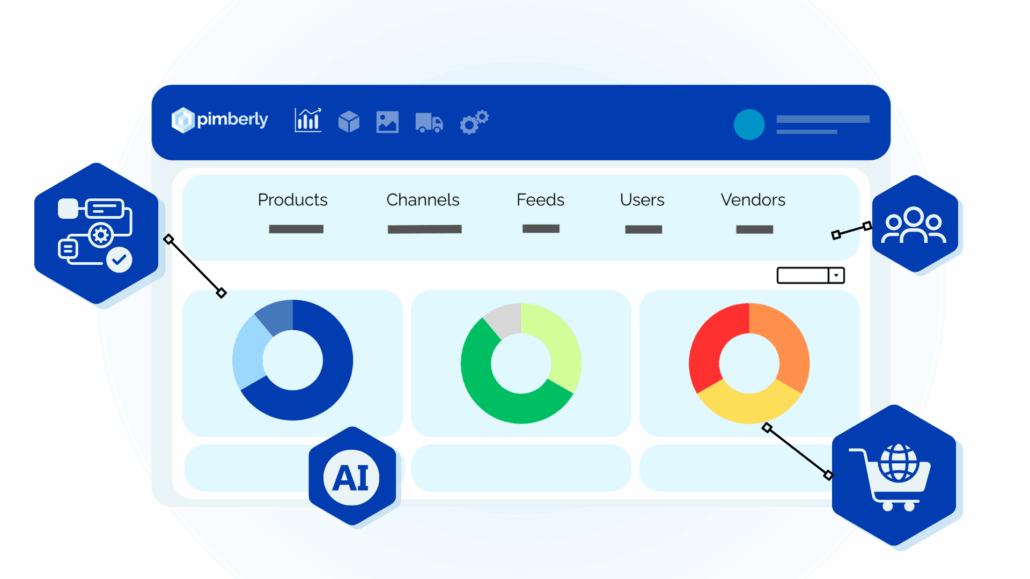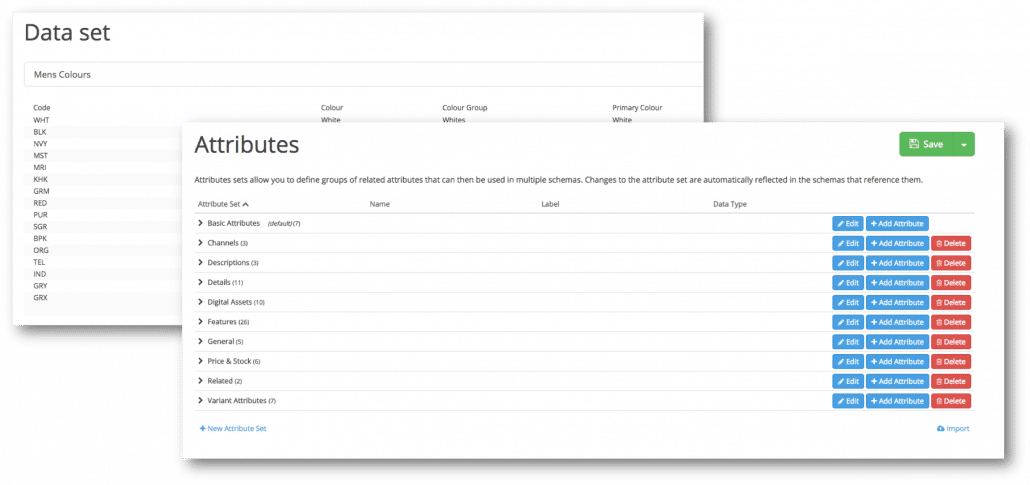Key Takeaways
- Accurate product data builds trust, reduces returns, and drives conversions.
- A PIM centralizes product information, making accuracy scalable across all channels.
- There are 10 key ways PIM solutions enhance data accuracy, from automation to governance.
What Is Data Accuracy?

Data accuracy refers to how correct, complete, and consistent information is across all systems and touchpoints. In product data terms, this means accurate attributes (e.g., size, weight, material), correct categorization, and consistent branding details across channels.
-
Retailers ensuring product listings are uniform across Amazon, Shopify, and print catalogs.
-
Distributors validating SKUs against manufacturer-provided specs.
-
Manufacturers maintaining regulatory compliance by ensuring technical product information is correct.
Why Data Accuracy Matters for eCommerce and B2B Brands
Challenge: Inconsistent Product Data
When product data is inaccurate, customers face confusion. They may see different specifications on your website versus a marketplace listing, which damages trust and increases returns.
Solution via PIM

A PIM solution creates a single source of truth, where product information is stored, validated, and syndicated. By centralizing product data, businesses reduce errors, save time, and deliver consistent experiences across channels.
10 Ways to Enhance Data Accuracy With a PIM
Below are the top 10 methods, with explanations of why they work so effectively.
1. Centralized Data Management
A PIM acts as the ‘golden record’ for product data, ensuring teams don’t rely on spreadsheets or fragmented systems. This eliminates duplication and conflicting versions of the truth. When everyone works from the same centralized platform, accuracy naturally improves.
2. Automated Data Validation Rules
Manual checks are error-prone. With PIM, you can create automated validation rules (e.g., flagging missing attributes, incorrect dimensions, or invalid values). These checks run at scale, ensuring only accurate data moves forward in workflows.
Why it works: Automation enforces standards consistently and reduces human oversight errors.

3. Real-Time Data Enrichment
Many PIMs integrate with third-party sources such as GS1 databases to validate GTINs or suppliers’ feeds. Enrichment ensures that product information is both correct and comprehensive.
Why it works: The more complete and standardized product data is, the less chance of errors when consumers compare products across channels.
4. Workflow Automation & Approvals
Data accuracy improves when you enforce structured workflows. PIM platforms allow teams to assign roles, track approvals, and monitor progress.
Why it works: Clear accountability means product data is reviewed and validated before publishing, minimizing inconsistencies.
5. Version Control & Audit Trails
Every change to product information is logged. Teams can roll back to previous versions if errors occur.
Why it works: Transparency ensures teams know exactly when, why, and by whom changes were made—making corrections faster and reducing ongoing errors.
6. Data Governance Frameworks
A PIM supports data governance by enforcing company-wide rules for how information is created, validated, and shared.
Why it works: Governance eliminates rogue data entry practices and ensures product attributes align with brand, compliance, and industry standards.
7. Channel-Specific Syndication
Each sales channel has unique requirements—Amazon, Shopify, and printed catalogs all need data in different formats. A PIM automatically tailors product information to each channel.
Why it works: Channel-specific accuracy reduces listing errors, prevents product delistings, and improves SEO across marketplaces.
8. Standardized Taxonomies and Attributes
Consistency in categories, naming conventions, and attribute sets ensures customers always see products described the same way.
Why it works: Standardization prevents mismatches (e.g., one SKU listed as “red” while another is “crimson”), which confuses both customers and search engines.
9. AI-Powered Attribute Completion

Best-in-class composable PIMs for 2025 leverage AI to fill gaps in product attributes by analyzing existing data and images.
Why it works: AI ensures data accuracy at scale, accelerating time-to-market while reducing human error in data entry.
10. Continuous Data Quality Monitoring
Accuracy is not a one-time project. PIM solutions continuously monitor product data quality, flagging inconsistencies or gaps for correction.
Why it works: Ongoing monitoring ensures data accuracy improves over time, supporting scalability and long-term reliability.
FAQs
Q: What is the difference between data accuracy and data quality?
A: Data accuracy is a subset of data quality. Accuracy refers to whether the information is correct and error-free. Data quality also includes completeness, timeliness, consistency, and usability.
Q: How does poor data accuracy impact customer experience?
A: Inaccurate product data leads to confusion, higher returns, and reduced trust in your brand. When customers can’t rely on your information, they’re less likely to buy or recommend your products.
Takeaways for eCommerce Managers Focused on Data Accuracy
To summarize, enhancing data accuracy is critical for brands, distributors, and retailers aiming to deliver exceptional digital experiences. With a PIM, you:
-
Centralize and validate product data.
-
Automate error-checking and enrichment.
-
Maintain governance and transparency across all teams and channels.
What this means for you: Data accuracy drives trust, reduces costs, and boosts revenue. The right PIM doesn’t just manage product data—it ensures it works for your business at every stage of the customer journey.

















